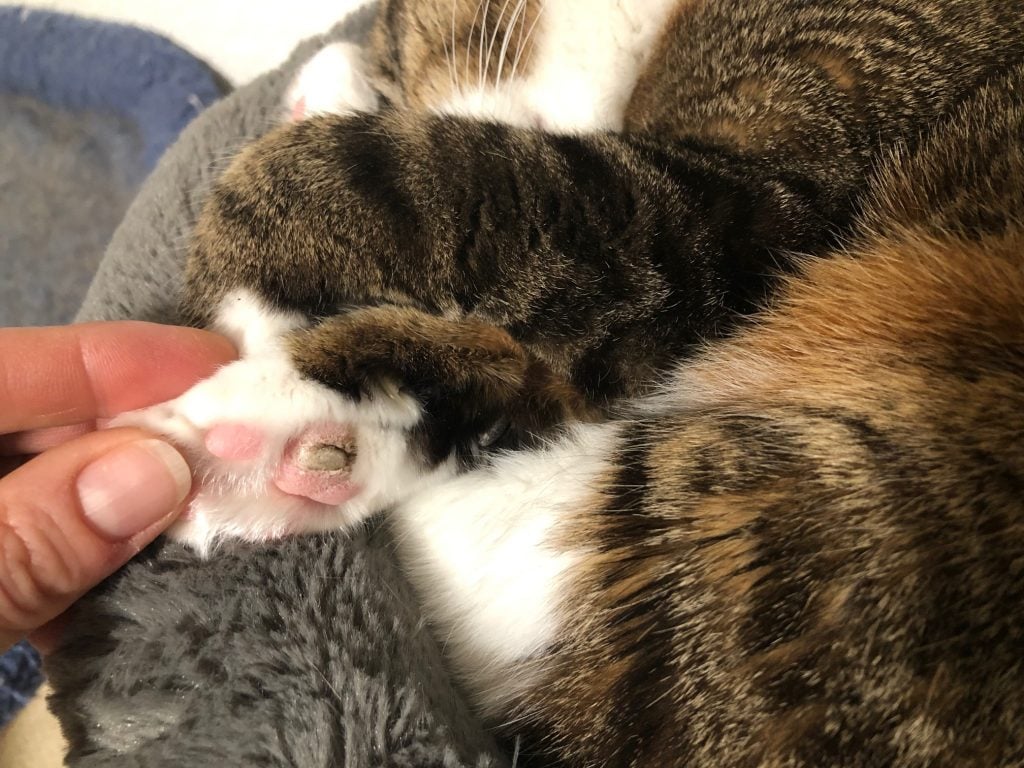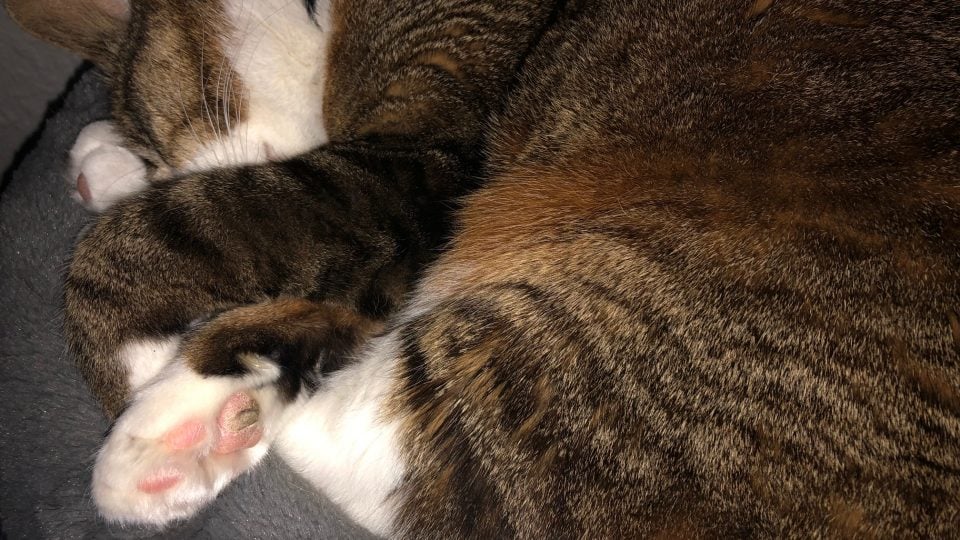If you’ve ever spotted what appears to be an extra claw growing out of your cat’s footbed, she could have ‘horned paws’. Thankfully, these callous-like growths aren’t particularly worrisome. In fact, as far as feline paw conditions go, cutaneous horns are on the more common side.
To learn more about these peculiar paw growths, we gathered expert insight from Dr. Rebecca Greenstein, BSc, DVM, chief veterinarian at Kleinburg Veterinary Hospital, and Rover’s veterinary medical advisor and Dog People panelist.
Here’s everything you need to know about horned paws in cats, so you can keep your pretty pet healthy—from head to paw.
What Are Horned Paws?
Cutaneous horns are a relatively common feline skin condition. Typically, they appear on a cat’s paw pads, although horns can occur on the face or other body parts as well. The growths may appear solo, or they can crop up in groups on multiple paw pads.
Horned paws are the result of an overproduction of keratin, the same protein that makes up our hair and nails. While unsightly, the horns are largely innocuous and are no reason to panic. By and large, the most unpleasant side effect is some harmless clacking.
That said, it’s wise to keep an eye on the growths, so you can alert your vet to any changes or concerns. Dr. Rebecca Greenstein tells us: “Simple paw horns may be nothing to really worry about, but uncontrolled overgrowth of keratin may be linked to underlying issues like viral diseases, more complex larger skin conditions, or even cancers.”
What Causes Horned Paws in Cats?
Cutaneous horns are the curious result of your cat’s keratin production going into hyperdrive. Our cats need keratin to grow hair and nails, but too much of this protein can be problematic. Another potential culprit: oozing cysts on your cat’s skin (gross, sorry.) When this occurs, excess fluid from the cyst builds up, hardens, and forms a dense horn.
If your vet suspects the horns are the result of something more serious—like feline leukaemia or cancer—they may recommend a biopsy and FelV test.

The growths on Matilda’s paws are unsightly, but she has never seemed bothered by them. Her vet is not concerned by them, either. Photo by Gwendolyn Elliott
Do Horned Paws Hurt Cats?
In most cases, no. As long as the horns don’t form on a weight-bearing part of the paw, your cat won’t experience pain or trouble with mobility.
However, if the horns do occur on a weight-bearing part of your cat’s paw, they could cause discomfort. “Where things can get a little more concerning,” Dr. Greenstein tells us, “is if they start to interfere with the underside of the paws when walking.”
Observe your cat for self-comforting behaviours, like licking her paws, as they may indicate pain. If you suspect your cat is in pain, schedule a visit to the vet.
Can I Trim My Cat’s Horned Paws?
Technically, yes, horned paws can be trimmed like ordinary nails. But is it the best idea? According to Dr. Greenstein, that’s a hard no. “You could risk bleeding, infections, discomfort, or the chance you’re cutting healthy tissue, or disrupting unstable diseased tissue,” she explains.
Before brandishing the clippers, you need to confirm that what you’re looking at is, in fact, a cutaneous horn, and not some other skin disorder or tumour. To rule out more serious conditions, a vet visit is in your cat’s best interest. Your vet can examine the growth and advise you on the appropriate treatment—they may even perform the trim for you.
Can anything else be done? You might be able to soften the growth with a little TLC, though the results are pretty mixed. Dr. Greenstein informs us that “some people try to soften the tissue with pet-friendly moisturisers, balms, or emollients, but they won’t remove horns or prevent further growth.”
At the end of the day, trimming your cat’s horns isn’t usually necessary. Our advice: if your cat isn’t bothered by them, leave them alone.
Can Cutaneous Horns Be Surgically Removed?
In some cases, your vet may recommend surgery to remove the cutaneous horns completely. According to Dr. Greenstein, a biopsy and surgical excision could be warranted “if the abnormal keratin growths are affecting mobility, growing rapidly, or if they are suspected to be linked to certain underlying skin or systemic diseases.”
This procedure is minimally invasive and takes place while your cat is under light sedation. To keep the horns from recurring, your vet will excise the base of the growth. Your vet can prescribe Azithromycin or Interferon to reduce pain and discomfort.
For the most part, horned paws aren’t something to lose sleep over. If your cat develops any horns, monitor her for discomfort and schedule a visit to your vet to rule out more serious conditions.



